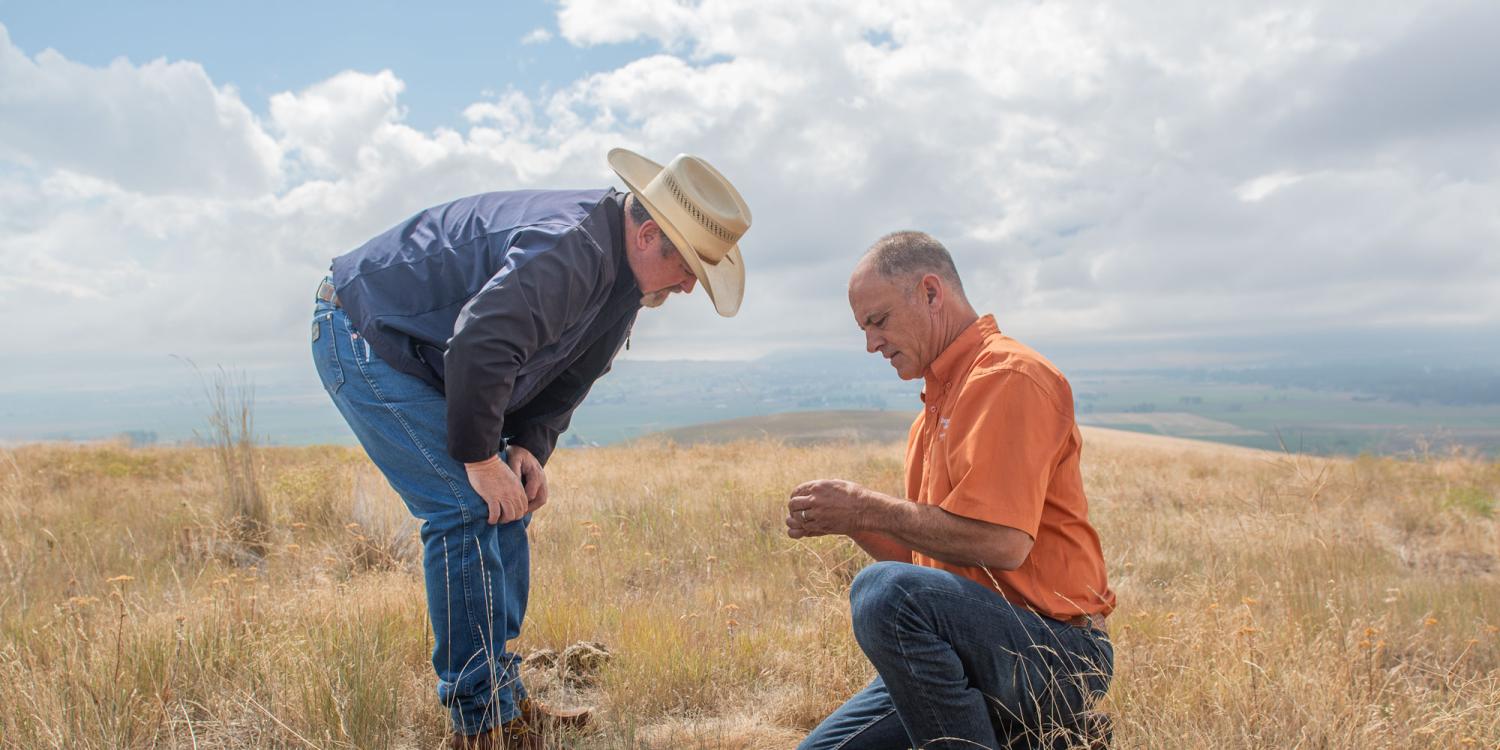
Invasive annual grasses were first reported in Wallowa County over 50 years ago. Initially they were found as outliers – a single small and inconspicuous plant. Today, however, these annual invaders are scattered countywide, from the high Zumwalt Prairie to the Snake River canyons.
In a county that is historically known for its livestock and wildlife grazing resources and recreational opportunities, invasive annual grasses are a serious threat to the landscape. Invasive annual grasses adversely affect forage quantity and quality, they alter wildlife regimes and habitat, and impact rangeland health across private and public land.
To address these issues, conservation organizations across the state are working to address this large landscape-scale problem, moving past reactive and expensive approaches to management efforts that are more strategic, that involve short- and long-term planning and engage the local community. Best management practices combined with continual learning will lead to adaptive management that will have long term results.
In response, the Wallowa County Invasive Annual Grasses Partnership, of which Oregon State University Extension Service is a member, operates under a shared vision for management countywide. The partnership dedicates time and resources to landowner outreach, education and assistance with land management planning. The partnership obtained feedback in 2021 and 2022 from a variety of land managers and resource specialists countywide.
Based on their feedback, a strategic plan was developed to develop best management strategies, and to determine outreach mechanisms that will encourage community support and participation. The team developed a template for landowners and land managers to follow to assess and create a management plan to address the annual invasive grass issues on their property.
The strategic action plan will guide long-term actions that will result in cost-effective approaches that improve grassland communities through coordinated management that works across jurisdictional boundaries.
In 2023 the partnership worked with 18 landowners to write management plans that are impacting a total of 38,325 acres. Another 20 landowners signed up for management plans in 2024, which will impact a total of 72,000 more acres impacted.
Pete Schreder, professor and Extension rangeland ecologist and livestock specialist, assisted in writing the strategic action plan, developing the maps, creating the management plan template, conducting the trainings for the contractors and meeting with landowners to educate them on the process.
As a result, a suite of tools will be used to strategically address the problem of annual invasive grasses in Wallowa County through conservation, restoration and management. In the future, grassland prairies in Wallowa County will be capable of supporting native plant communities and forage quality that is resilient in the face of climate change, wildfire concerns and land-use changes.